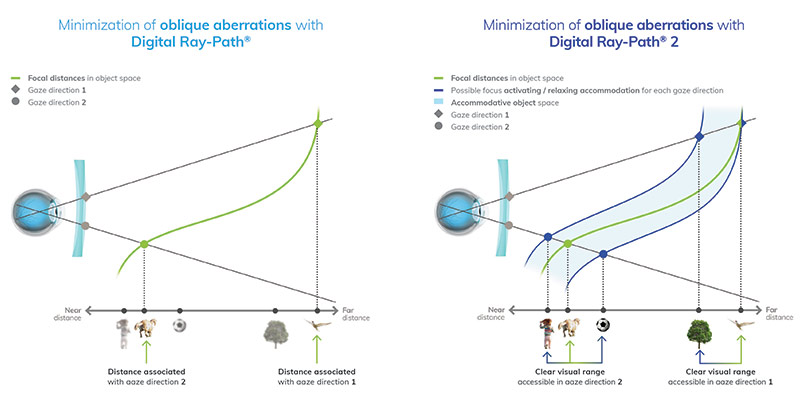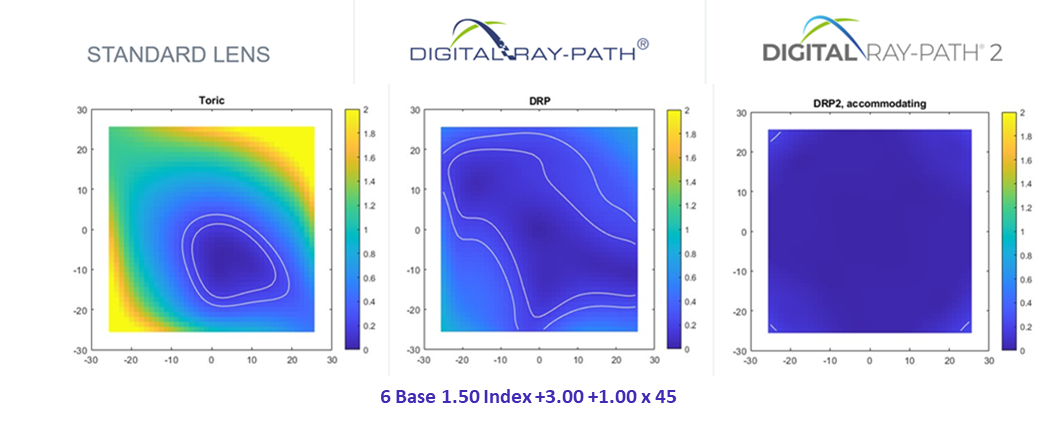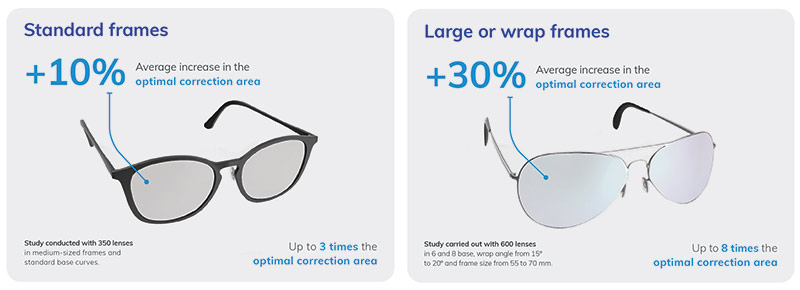Sponsored by IOT
By Deborah Kotob, ABOM
Nature inspires art, poetry, literature and science. And nature inspired IOT’s new foundational technology, Digital Ray-Path 2.* This revolutionary new lens personalization technology utilizes the discovery of new advanced mathematics to calculate point-by-point optimization of the lens design, incorporating the eye’s natural focusing power.
Every optical engineer and lens designer’s goal is to advance science and mathematical methods in pursuit of lens performance improvements. The introduction of free-form customized lenses was the most significant technological leap in recent years, resulting in substantial improvement in the optical quality of millions of lenses worldwide.
Since IOT introduced Digital Ray-Path® in 2008, their continuous research and development led to significant improvements in mathematical algorithms and the optical, physiological and clinical principles used to customize ophthalmic lenses.
Building on Digital Ray-Path, IOT developed the new state-of-the-art Digital Ray-Path 2, a natural evolution in personalized lens optimization and compensation technology which uses breakthrough mathematical methods to improve merit functions for the smooth distribution of residual aberrations. The effects of full-field aberrations are minimized by considering the human visual systems’ accommodative facility to make small focus adjustments. With this new technology, the lens is also now optimized for the complete volume of accommodative object space instead of a defined point of object space (Fig. 1).
Oblique aberrations are inherent in ophthalmic lenses. These aberrations are spherocylindrical in nature, meaning both a cylindrical or astigmatic error and a spherical power error exist. These distortions cause blurred vision as the wearer’s gaze moves away from the lens’ optical center. While Digital Ray-Path Technology minimized aberrations in personalized lenses, elimination is not mathematically possible. As a result, some residual distortion and resulting blur persist. However, with IOT’s new Digital Ray-Path 2, new mathematical methods push the limits of geometry and incorporate (for the first time) the wearers’ small amount of plus spherical accommodative power, in the lens calculation.

FIG. 1
THE EFFECT OF OBJECT DISTANCE ON OBLIQUE SPHEROCYLINDRICAL ABERRATIONS
Both off-axis gaze direction and object distance influence the oblique power and the degree of blur in the lens. This blur is minimized with Digital Ray-Path 2 technology for any object distance in the object space.

FIG. 2
STANDARD OBJECT SPACE VS. ACCOMMODATIVE OBJECT SPACE
Digital Ray-Path minimizes oblique aberrations for one distance or point in standard object space and direction of gaze. One point in space equals one point on the lens. Digital Ray-Path 2 corrects for oblique aberrations within a volume of focal distances in accommodative object space for each direction of gaze. The minimization of oblique aberrations is balanced throughout the accommodative object space.
What does this all mean for the wearer? It means an increase in the optimal correction area of the lens for larger areas of clear, undistorted vision. Lenses calculated with Digital Ray-Path 2 Technology provide a larger area of optimal correction for the wearer (Fig. 2). On average, considering hundreds of real jobs, the optimal correction area is significantly expanded compared to lenses calculated with IOT’s previous technology, Digital Ray-Path.
Digital Ray-Path 2 represents a breakthrough in free-form personalized lens technology that delivers unprecedented visual quality to the wearer.

*Digital Ray-Path 2 is a patent pending technology. Digital Ray-Path is a registered trademark of Indizen Optical Technologies S.L.U.













